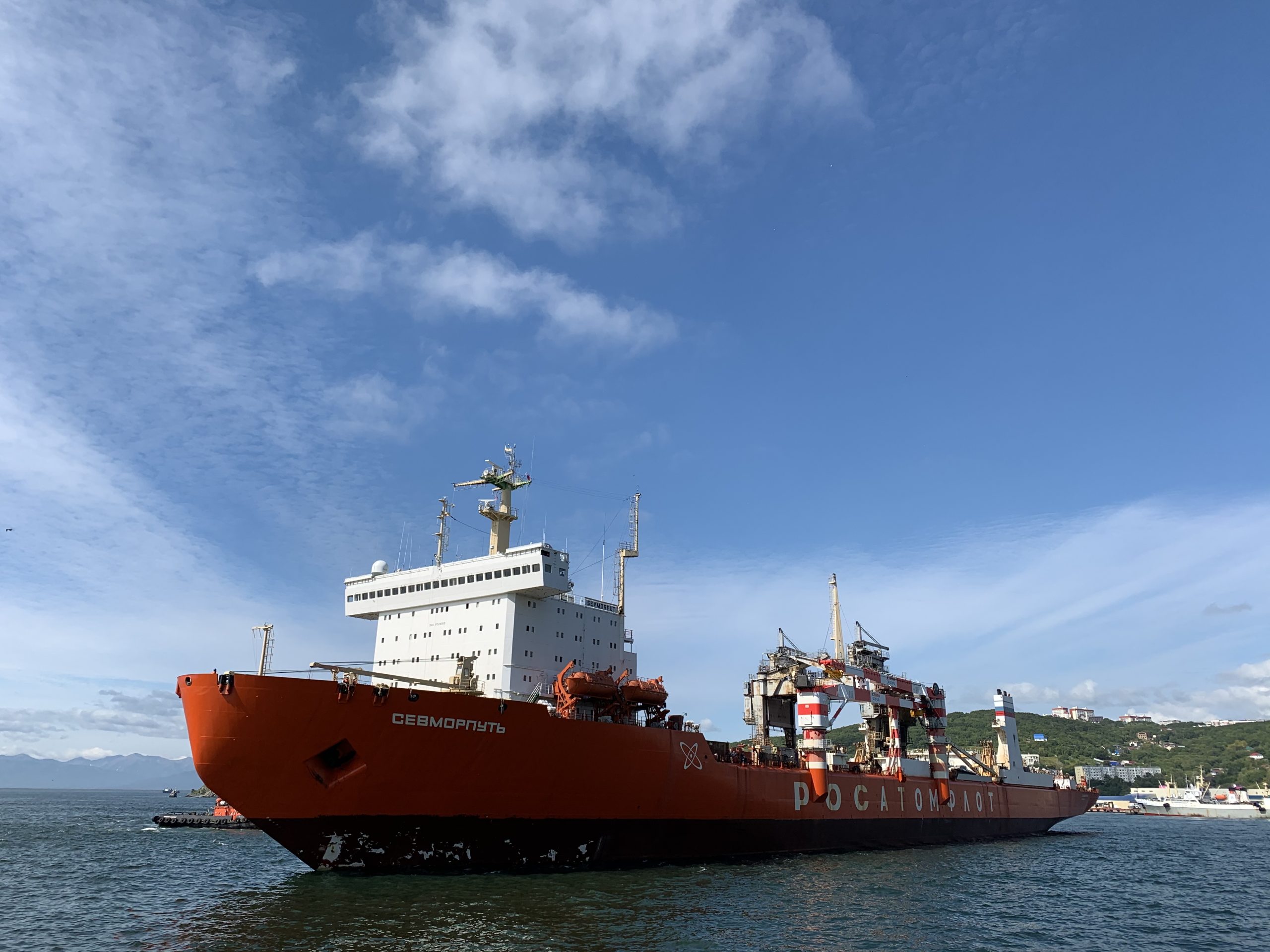
Lenin - a pioneer of nuclear energy

Lenin is a pioneer of nuclear energy. Lenin in May 1960, photo from a Danish Navy ship. Helicopter Mi-1 on the landing site. Forswarz Libraries
The development of northern Siberia began with what could be "extracted" from its forests. Resources were plentiful, the problem was how to get "loot" to "civilization". The extremely difficult terrain practically excluded land transport, so it remained water, but since numerous rivers flowed into cold seas, covered with ice for most of the year, it was not easy to use this road.
From the 1880th century, the settlers living on the shores of the White Sea moved farther and farther east, eventually reaching the mouth of the Ob. After the expeditions of the beginning of the Romanov dynasty, the exploration of northern waters began in earnest in the first half of the 1877th century by the expedition of Vitus Bering, the brothers Khariton and Dmitry Laptev, and Semyon Chelyuskin. A hundred years later, it became clear that a cruise along the northern shores of Asia was possible. For the first time this was done by the expedition of Adolf Erik Nordenskiöld on the steamer Vega, which returned to Stockholm in April XNUMX, having completed an almost two-year circular expedition with ice wintering already at the Bering Strait. At that time, since XNUMX, agricultural products were already exported from the ports of the Kara Sea to Arkhangelsk. It was not a large-scale (and therefore more profitable) enterprise, but as the fossil resources of Siberia were discovered, the Arctic waters aroused increasing interest among Russians.
At the end of March 1897 cadmium. Stepan Makarov, an oceanographer, traveler, and later commander of one of the squadrons of the Baltic Fleet, gave a lecture at the St. Petersburg Geographical Society (this is the source of the quote at the beginning), during which he proposed to build an icebreaker that could overcome them. The postulate was supported by the government and a year and a half later, the Jermak was launched at the Newcastle-on-Tyne shipyard in Newcastle-on-Tyne (Makarov was the author of his project, he also supervised the work). Until 1901, he made three "reconnaissance" flights to the north with Makarov on board. Ten years later, regular flights began between Vladivostok and Kolyma, still of little economic importance.
The beginning of the First World War and the expedition led by Boris Vilkitsky in 1913-1915. (discovered, among other things, Severnaya Zemlya), during which the 60-meter icebreakers "Taimyr" and "Vaigach" successfully proved themselves, changed the idea of \uXNUMXb\uXNUMXbthe northern route. The independent October Revolution added to its significance, as it became the shortest sea route between the ends of the Bolshevik state, but also the only one outside the waters of countries that at least resisted it.
In 1932, for the first time in one navigation, the icebreaker Alexander Sibiryakov left Arkhangelsk for the Bering Strait with the expedition of Otto Schmidt, who was soon appointed the first director of the Glavsevmorput. In 1934, it was destroyed in the opposite direction by Fedor Litke, and in 1935, after the transfer of two timber carriers from Leningrad to Vladivostok, its regular cargo operation began. As a result, in the second half of the 30s, 4 Arctic icebreakers of the Stalin type were built at Soviet shipyards.
After the end of navigation in 1937, when more than 20 ships got stuck in the ice (one of the ships was sunk by "advancing" hummocks), Moscow realized the need for arctic icebreakers of a more advanced design and more powerful propulsion. I didn’t have time to get into the details when the Great Patriotic War broke out, and as a result, only on May 22, 1947, the USSR government adopted a resolution “To provide the Northern Sea Route with powerful icebreakers and a transport fleet adapted for navigation in the Arctic to transform it.” into a normally operating sea route”, in which appropriate instructions were given to the Ministry of Shipbuilding.
